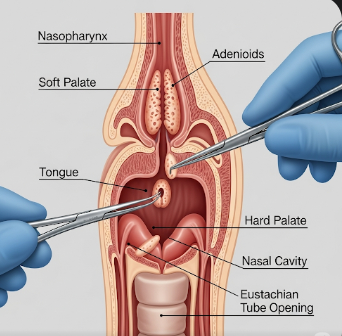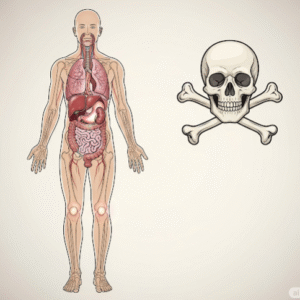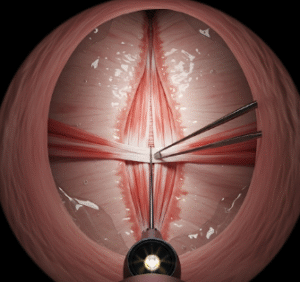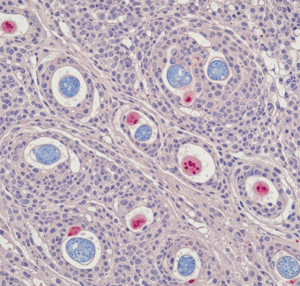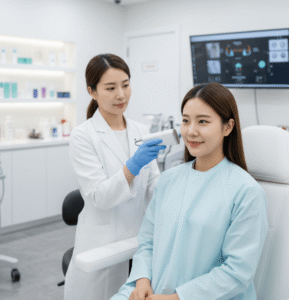Overview
Adenoidectomy is a surgical procedure to remove the adenoids, a mass of lymphoid tissue located at the back of the nasal cavity. Adenoids are part of the immune system but can cause problems when enlarged or chronically infected, leading to breathing difficulties, recurrent infections, snoring, and sleep apnea.
In Korea, adenoidectomy is performed in modern pediatric ENT centers with advanced surgical tools and anesthesia protocols, ensuring high safety, minimal complications, and quick recovery for children and sometimes adults with adenoid issues.
What is Adenoidectomy?
Adenoidectomy involves the surgical removal of the adenoids to improve nasal airflow, reduce infections, and alleviate sleep-disordered breathing.
Indications include:
- Recurrent ear infections (otitis media)
- Chronic nasal obstruction causing mouth breathing
- Snoring or obstructive sleep apnea
- Sinus infections or chronic rhinitis
- Sometimes performed alongside tonsillectomy
Key points:
- Commonly performed in children aged 3–10 years, but occasionally in older children or adults
- Helps improve sleep quality, breathing, and immune function
- Typically a short, outpatient procedure with minimal discomfort
What are the benefits?
- ✅ Relieves nasal obstruction and breathing difficulties
- ✅ Reduces frequency of ear infections and sinusitis
- ✅ Improves sleep quality, snoring, and daytime behavior
- ✅ Short hospital stay and rapid return to normal activities
- ✅ Modern techniques in Korea minimize bleeding and complications
- ✅ Can be combined with tonsillectomy if needed for additional benefit
Procedure Details
1) How should I prepare for Adenoidectomy?
- ➤ Preoperative evaluation: ENT examination, sometimes X-rays or nasal endoscopy
- ➤ Discuss allergies, medications, and previous surgeries
- ➤ Fasting is required prior to surgery
- ➤ Pre-surgery counseling about procedure, anesthesia, recovery, and potential risks
- ➤ Arrange parental support for children post-surgery
2) What happens during the procedure Adenoidectomy?
- ✅ Performed under general anesthesia
- ✅ Adenoids are removed through the mouth using surgical instruments or cautery
- ✅ Bleeding is controlled throughout the procedure
- ✅ Duration: Usually 20–40 minutes
- ✅ Procedure may be combined with tonsillectomy if indicated
- ✅ Patient is monitored carefully until full recovery from anesthesia
3) What happens after Adenoidectomy?
- ➤ Observation for a few hours post-surgery, often discharged same day
- ➤ Pain relief with child-friendly analgesics
- ➤ Encourage hydration and soft diet
- ➤ Gradual return to normal activity within a few days
- ➤ Parents should monitor for bleeding, infection, or unusual symptoms
- ➤ Follow-up appointment to ensure proper healing
Risks / Benefits
Potential Risks:
- ➤ Postoperative bleeding
- ➤ Infection at the surgical site
- ➤ Pain or mild difficulty swallowing
- ➤ Rare anesthesia-related complications
- ➤ Rare changes in voice or nasal speech
Benefits:
- ✅ Resolves nasal obstruction and breathing problems
- ✅ Reduces ear infections, sinusitis, and sleep apnea symptoms
- ✅ Short recovery time and well-tolerated by children
- ✅ Advanced pediatric ENT care in Korea minimizes risks and ensures safety
Recovery and Outlook
- Hospital stay: Usually outpatient or 1 day
- Diet: Start with soft foods and liquids; avoid hard or spicy foods
- Activity: Gradual return to normal activity; avoid strenuous play for 5–7 days
- Pain management: Analgesics as prescribed; cold liquids or ice packs may help
- Full recovery: Typically 7–10 days, with improvement in breathing, sleep, and infection frequency
- Follow-up: ENT visit to assess healing and monitor for complications
When To Call the Doctor
- ➤ Persistent or severe bleeding from the nose or mouth
- ➤ Fever or signs of infection
- ➤ Difficulty breathing or noisy breathing
- ➤ Dehydration due to refusal to drink fluids
- ➤ Any unusual symptoms during recovery
Best Korea Option / Process
- ✅ Korea offers specialized pediatric ENT hospitals with experienced surgeons
- ✅ Advanced surgical techniques ensure minimal bleeding and rapid recovery
- ✅ Postoperative care includes pain control, hydration monitoring, and dietary guidance
- ✅ International patients benefit from VIP services, English-speaking staff, and coordinated care
- ✅ High safety standards and expert care make Korea a preferred destination for adenoidectomy

